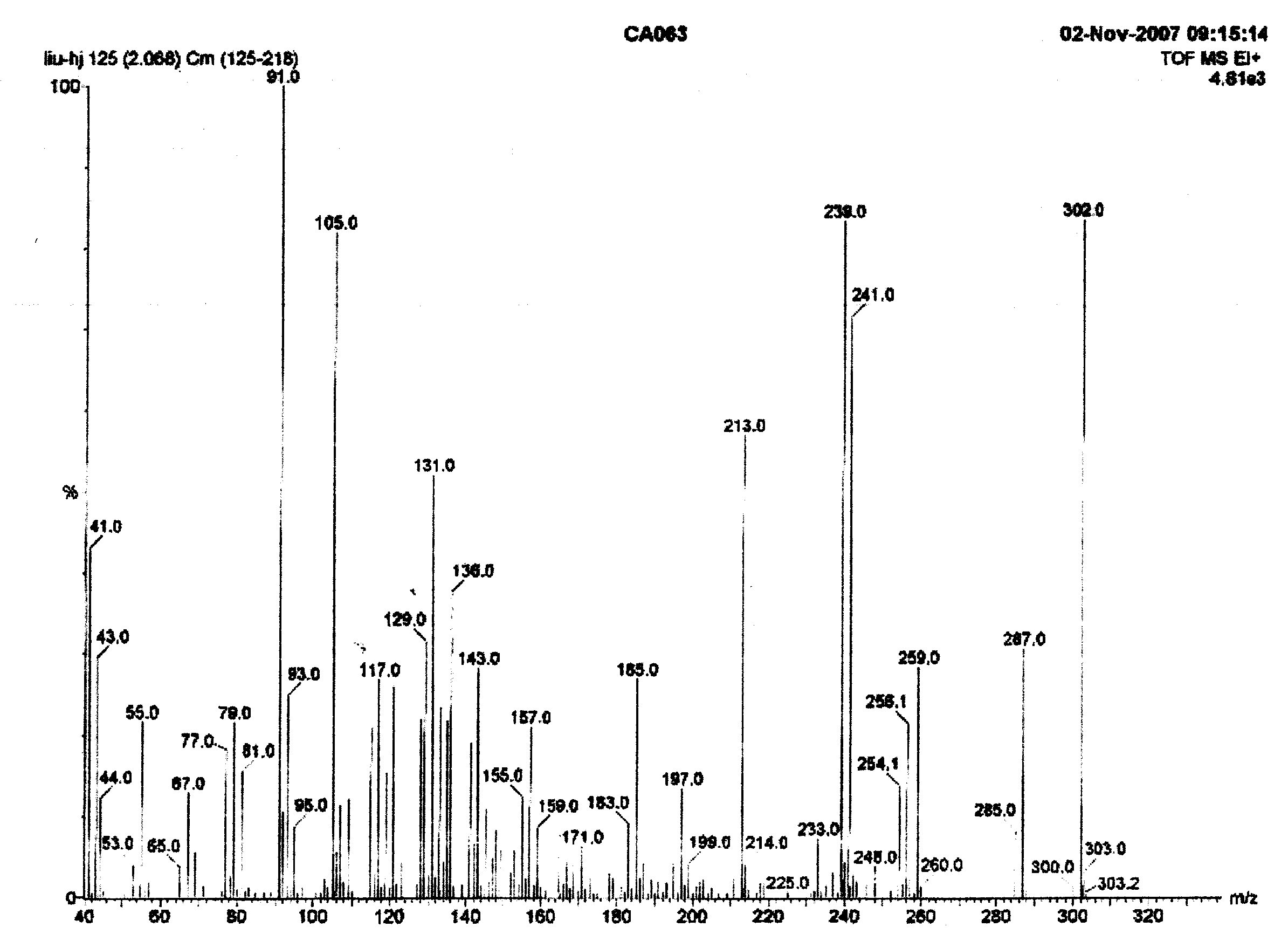Process for producing abietic acid
A technology of abietic acid and organic acid, applied in the separation/purification of carboxylic acid compounds, organic chemistry and other directions, can solve the problems of high industrialization cost of microwave technology, environmental pollution, lack of development value, etc., to avoid local peroxidation, reduce Production cost and effect of saving water resources
- Summary
- Abstract
- Description
- Claims
- Application Information
AI Technical Summary
Problems solved by technology
Method used
Image
Examples
Embodiment 1
[0020] A preparation method of abietic acid is as follows: add 10 parts by mass of rosin to an organic acid solvent with 2 to 6 carbons in 5 to 100 parts by mass, stir and mix evenly, and heat to 30 to 95°C to completely dissolve the rosin; The rosin solution is added to a fixed-bed reactor equipped with a solid acid-cation exchange resin catalyst, and the temperature of the fixed-bed reactor is maintained at 30-95°C. The rosin solution flows through the fixed-bed reactor from top to bottom to obtain an abietic acid isomerization liquid; The content of abietic acid in the abietic acid isomerization liquid is analyzed by gas chromatography, and the content of abietic acid is more than 70%. Put the abietic acid isomerization solution at room temperature for 3-8 hours, the abietic acid crystallization precipitates in the abietic acid isomerization solution, filter to obtain the crude abietic acid crystals, dissolve the crude abietic acid crystals in an organic solvent at 30-95°C ...
Embodiment 2
[0028] Put 10 parts of rosin into 10 parts of propionic acid solvent, slowly heat to 70°C, and dissolve it completely under stirring. The rosin that dissolves is added in the fixed bed reactor that 001 * 7 strongly acidic cation exchange resin (GB / T 13659-1992) catalyzer is housed, and this fixed bed reactor is heated before feeding, and keeps constant temperature 40 ℃. Rosin propionic acid solution flows through fixed-bed reactor from top to bottom, obtains abietic acid isomerization liquid; The content of abietic acid in this abietic acid isomerization liquid is analyzed by gas chromatography, and the content of abietic acid is 85.1%. Stand at room temperature for 4 hours, abietic acid crystallizes out in the abietic acid isomerization liquid, filter to obtain the crude abietic acid crystals, recover all the filtered propionic acid solvent for reuse, and dissolve the crude abietic acid crystals with solvent propanol at 50°C Recrystallization was repeated 3 times, and the cry...
Embodiment 3
[0030] Put 10 parts of rosin into 20 parts of butyric acid solvent, slowly heat to 50°C, and dissolve it completely under stirring.
[0031] The dissolved rosin is added to a fixed-bed reactor equipped with a three-layer mixed-bed special ion exchange resin (HG / T 2623-94) catalyst, which is heated before feeding and kept at a constant temperature of 50°C. Rosin butyric acid solution flows through the fixed bed reactor from top to bottom to obtain abietic acid isomerization liquid; the content of abietic acid in this abietic acid isomerization liquid is analyzed by gas chromatography, and the content of abietic acid is 86.0%. Stand at room temperature for 5 hours, abietic acid crystallizes out in the isomerization liquid of abietic acid, and filters to obtain the crude product of abietic acid crystals. The butyric acid solvent after filtration is all recovered and reused, and the crude product of abietic acid crystals is dissolved in acetone at 50° C. Crystallization was repeat...
PUM
| Property | Measurement | Unit |
|---|---|---|
| melting point | aaaaa | aaaaa |
| melting point | aaaaa | aaaaa |
| melting point | aaaaa | aaaaa |
Abstract
Description
Claims
Application Information
 Login to View More
Login to View More - R&D
- Intellectual Property
- Life Sciences
- Materials
- Tech Scout
- Unparalleled Data Quality
- Higher Quality Content
- 60% Fewer Hallucinations
Browse by: Latest US Patents, China's latest patents, Technical Efficacy Thesaurus, Application Domain, Technology Topic, Popular Technical Reports.
© 2025 PatSnap. All rights reserved.Legal|Privacy policy|Modern Slavery Act Transparency Statement|Sitemap|About US| Contact US: help@patsnap.com


